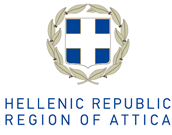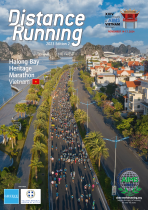Opinion
01 July 2016, 7am
The numbers game
Culled from last year’s statistics we list below the world’s biggest marathons (in terms of the number of finishers recorded).
These numbers are slightly less than the number of those starting the race which in turn is very marginally less than those registered – ie those who pick up their number from race registration. The really significant difference is between those who successfully enter a race – often several months and sometimes almost a full year before it is held – and those who pick up their number. Race organisers, from years of previous experience, have a very clear idea of what proportion of those who enter will likely not collect their number and build this into their planning.
Concerning the 2015 list in particular there are several notable features. One is the large margin by which New York heads the rest – yet this is the first time it has dropped below the 50,000 mark since breaking that barrier for the first time in 2013. Paris surpassed 40,000 for the first time, a number that has only otherwise been topped by Chicago (in 2014).
London had its highest number of finishers ever but has this year added another couple of thousand to the figure. It seems set to re-enter the numbers game conducted during the 1980s and 1990s with New York. During those decades each race leap-frogged the total of their rival as successive editions were held until New York, after dipping under 24,000 during 2001 in the first post-9/11 event, then pulled ahead in the 2000s to what has so far proved an unassailable leading position, first surpassing 40,000 in 2009.
So London is competing – if competing it is – for second place against races such as Paris, Chicago and Berlin. In doing so it starts from a disadvantage inasmuch as the course does not have the capacity – the roads are just not wide enough – to accommodate as many runners as any of these other races.
The demand for entries is only a subsidiary factor as most of these ‘top of the bill’ marathons have far more demand for places than they can satisfy. This is above all true of the highest Japanese entry in the list, the Tokyo Marathon, which capped its entry at 36,500. Tokyo generally receives upwards of 300,000 applications.
The emergence of fully-fledged big-city mass marathons in Japan has wrought the most profound change to these lists in recent years. There are no fewer than 12 Japanese races in the top-30 (and 9 in the top 20). Yet 10 years previously only Naha Marathon would have made this list (as it would have 10 years before that when it was sixth largest in the world). The first big-city mass marathon to emerge in Japan was Tokyo in 2007, when participation leapt to 25,000 (from the previous year’s elite entry of several dozen runners who could finish within the “hours 30 minutes time limit.
With instant success for the first mass Tokyo Marathon many other Japanese cities quickly followed their example. The 2015 list includes no fewer than eight races with between 15,000-20,000 finishers and this includes one women-only event (Nagoya) and two races (Naha and Shonan) held on the same day (6 December, with a combined total of 34,500). Yet few people outside Japan – even within the Marathon world – will have heard of these races.
Perhaps the race which has suffered as a consequence of this huge upsurge in Japan is the Honolulu Marathon. Back in 1995 it was the largest race in the world with 27022 finishers to New York’s 26754 and London’s 25272. In the early 2000s it was consistently the sixth largest marathon in the world – and in 2002 fourth – with a Japanese entry comprising a majority of the total. With such a proportion of high-spending overseas runners Honolulu at that time probably had the largest economic impact on its locality of any race ever. It has maintained a relatively consistent total of 21–22,000 finishers since then but has slipped to 12th position as the overall level of participation in all the big marathons has risen.
Rising overall levels of participation are reflected by the length of the three lists for 1995, 2005 and 2015. Last year 30 races are listed. Amsterdam, the 30th, had over 12000 finishers. The 15th of the 15 largest marathons of 2005 (Köln) had 11000; and the 10th of the 10 largest marathons in 1995 (Boston) had only 8250. To put it another way, the 10th-place (Boston) finisher numbers for 1995 would have placed it 19th in 2005 and 59th on the 2015 list. In1995 there were seven marathons with more than 10000 finishers: in 2005, 15; and in 2015, 42.
Not only are most of the long-established large marathons getting vastly increased numbers of finishers but there are a lot of new entries pushing them hard from behind. Partly because running is a healthy pursuit the underlying numbers are also healthy.
| 2015 | |||
|---|---|---|---|
| 01 NOV | New York | 49312 | |
| 12 APR | Paris | 40173 | |
| 26 APR | London | 37562 | |
| 11 OCT | Chicago | 37182 | |
| 27 SEP | Berlin | 36820 | |
| 22 FEB | Tokyo | 35293 | JPN |
| 25 OCT | Osaka | 29680 | JPN |
| 20 APR | Boston | 26610 | |
| 25 OCT | Marine Corps | 23197 | |
| 15 MAR | Los Angeles | 21904 | |
| 15 MAR | Yokohama | 21561 | JPN |
| 13 DEC | Honolulu | 21546 | |
| 30 AUG | Mexico | 20516 | |
| 11 JAN | Disney World | 19959 | |
| 06 DEC | Naha | 18326 | JPN |
| 11 JAN | Nanohana | 18150 | JPN |
| 08 MAR | Nagoya Women | 17231 | JPN |
| 15 Nov | Kobe | 17087 | JPN |
| 06 DEC | Shonan | 16173 | JPN |
| 19 APR | Kasumigaura | 15601 | JPN |
| 15 MAR | Barcelona | 15492 | |
| 15 FEB | Kyoto | 15452 | JPN |
| 30 MAY | Stockholm | 14833 | |
| 26 APR | Hamburg | 14743 | |
| 22 MAR | Itabashi | 14119 | JPN |
| 15 NOV | Valencia | 14080 | |
| 26 OCT | Dublin | 12920 | |
| 25 JAN | Hong Kong | 12531 | |
| 08 NOV | Okayama | 12412 | JPN |
| 18 OCT | Amsterdam | 12349 | |
| 2005 | |||
| 06 NOV | New York | 36856 | |
| 17 APR | London | 35261 | |
| 09 OCT | Chicago | 32995 | |
| 25 SEP | Berlin | 30382 | |
| 10 APR | Paris | 28857 | |
| 11 DEC | Honolulu | 24219 | |
| 13 MAR | Seoul | 21067 | |
| 24 APR | Hamburg | 17557 | |
| 18 APR | Boston | 17549 | |
| 05 JUN | San Diego | 15934 | |
| 04 DEC | Naha | 14882 | JPN |
| 04 JUN | Stockholm | 12698 | |
| 11 SEP | Koeln | 11071 | |
| 1995 | |||
| 10 DEC | Honolulu | 27022 | |
| 12 NOV | New York | 26754 | |
| 02 APR | London | 25272 | |
| 02 APR | Paris | 16197 | |
| 22 OCT | Marine Corps | 14618 | |
| 03 DEC | Naha | 13809 | JPN |
| 24 SEP | Berlin | 13088 | |
| 30 APR | Hamburg | 9598 | |
| 15 OCT | Chicago | 8641 | |
| 17 APR | Boston | 8258 |







